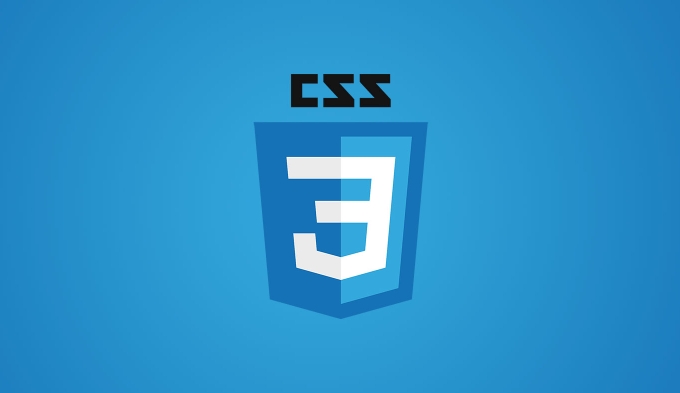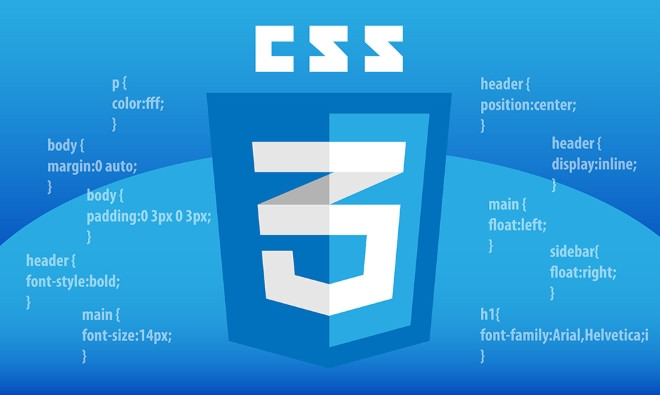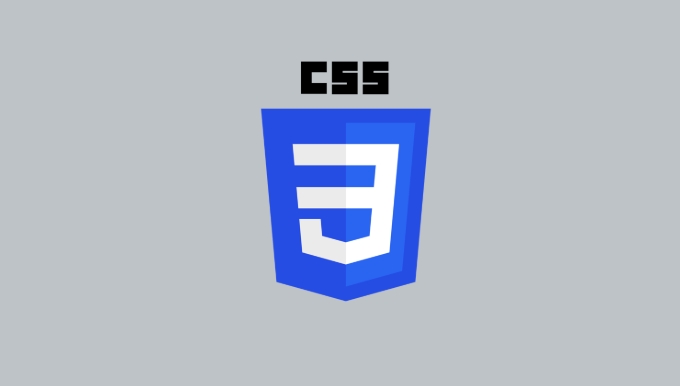CSS Transition is suitable for simple property changes, while Animation is suitable for complex multi-step animations. 1. Transition focuses on smooth changes between two states, suitable for interactions such as button hovering and state switching, and can only control the start and end states; 2. Animation defines multiple keyframes through @keyframes, which can realize complex animations such as rotation and loading, and supports advanced controls such as loops, pauses, and reverse playback; 3. The selection basis is the complexity of demand: Transition is used for simple changes, and Animation is used for multi-stage or loop animation, and the two can also be used in combination.

CSS transitions and animations are both tools used to achieve visual changes in web elements, but they are obviously different in how they are used and applicable scenarios. Simply put, transition is more suitable for simple attribute changes, such as button hover effect, and animation is more suitable for more complex, multi-step animation sequences, such as loading animations or interactive animations.

What is CSS Transition?
Transition is a way to smoothly transition elements from one style to another, focusing on the process of change between two states .
Use scenarios and suggestions:
- Suitable for simple interactions such as button hover, switch status switching, etc.
- You can only animation between the beginning and end states, and the intermediate process cannot be controlled.
For example, if you want a button to slowly darken the color when hovering, you can use transition:

button {
background-color: blue;
transition: background-color 0.3s ease;
}
button:hover {
background-color: darkblue;
}Common configuration items:
-
transition-property: Specify which properties need animation -
transition-duration: animation duration -
transition-timing-function: easing function (such as ease, linear) -
transition-delay: delay execution
Note: Not all attributes can be transitioned, such as
display, not.
What is CSS Animation?
Animation allows you to define multiple keyframes, enabling more complex and flexible animation effects.

Use scenarios and suggestions:
- Suitable for creating animations, progress bars, loading icons, etc. for loop playback.
- Multiple stages can be defined through @keyframes to control the style of each stage.
For example, make a simple infinite rotation animation:
@keyframes spin {
0% { transform: rotate(0deg); }
100% { transform: rotate(360deg); }
}
.spinner {
animation: spin 2s linear infinite;
}Common configuration items:
-
animation-name: bind keyframes name -
animation-duration: animation duration -
animation-timing-function: easing function -
animation-delay: delayed startup -
animation-iteration-count: Number of playbacks (can be set to infinite) -
animation-direction: playback direction (forward, reverse, alternating)
Animation can be paused, reversed, or even set the state after playback is completed, with much flexibility than transition.
Transition and Animation selection basis
In actual development, how to choose depends on the specific requirements:
- If it is just a simple change between two states, it is more concise and efficient to use transition .
- If multiple stages, loop playback, or custom rhythms are required, use animation .
Sometimes it can also be used in combination, such as first using transition as button feedback, and then using animation to achieve the animation after clicking.
Basically that's it. The use of the two does not conflict. After understanding their respective characteristics, you can choose reasonably according to project needs.
The above is the detailed content of Explain CSS transitions vs animations. For more information, please follow other related articles on the PHP Chinese website!

Hot AI Tools

Undress AI Tool
Undress images for free

Undresser.AI Undress
AI-powered app for creating realistic nude photos

AI Clothes Remover
Online AI tool for removing clothes from photos.

Clothoff.io
AI clothes remover

Video Face Swap
Swap faces in any video effortlessly with our completely free AI face swap tool!

Hot Article

Hot Tools

Notepad++7.3.1
Easy-to-use and free code editor

SublimeText3 Chinese version
Chinese version, very easy to use

Zend Studio 13.0.1
Powerful PHP integrated development environment

Dreamweaver CS6
Visual web development tools

SublimeText3 Mac version
God-level code editing software (SublimeText3)

Hot Topics
 CSS tutorial for creating loading spinners and animations
Jul 07, 2025 am 12:07 AM
CSS tutorial for creating loading spinners and animations
Jul 07, 2025 am 12:07 AM
There are three ways to create a CSS loading rotator: 1. Use the basic rotator of borders to achieve simple animation through HTML and CSS; 2. Use a custom rotator of multiple points to achieve the jump effect through different delay times; 3. Add a rotator in the button and switch classes through JavaScript to display the loading status. Each approach emphasizes the importance of design details such as color, size, accessibility and performance optimization to enhance the user experience.
 Addressing CSS Browser Compatibility issues and prefixes
Jul 07, 2025 am 01:44 AM
Addressing CSS Browser Compatibility issues and prefixes
Jul 07, 2025 am 01:44 AM
To deal with CSS browser compatibility and prefix issues, you need to understand the differences in browser support and use vendor prefixes reasonably. 1. Understand common problems such as Flexbox and Grid support, position:sticky invalid, and animation performance is different; 2. Check CanIuse confirmation feature support status; 3. Correctly use -webkit-, -moz-, -ms-, -o- and other manufacturer prefixes; 4. It is recommended to use Autoprefixer to automatically add prefixes; 5. Install PostCSS and configure browserslist to specify the target browser; 6. Automatically handle compatibility during construction; 7. Modernizr detection features can be used for old projects; 8. No need to pursue consistency of all browsers,
 Creating custom shapes with css clip-path
Jul 09, 2025 am 01:29 AM
Creating custom shapes with css clip-path
Jul 09, 2025 am 01:29 AM
Use the clip-path attribute of CSS to crop elements into custom shapes, such as triangles, circular notches, polygons, etc., without relying on pictures or SVGs. Its advantages include: 1. Supports a variety of basic shapes such as circle, ellipse, polygon, etc.; 2. Responsive adjustment and adaptable to mobile terminals; 3. Easy to animation, and can be combined with hover or JavaScript to achieve dynamic effects; 4. It does not affect the layout flow, and only crops the display area. Common usages are such as circular clip-path:circle (50pxatcenter) and triangle clip-path:polygon (50%0%, 100 0%, 0 0%). Notice
 What is the difference between display: inline, display: block, and display: inline-block?
Jul 11, 2025 am 03:25 AM
What is the difference between display: inline, display: block, and display: inline-block?
Jul 11, 2025 am 03:25 AM
Themaindifferencesbetweendisplay:inline,block,andinline-blockinHTML/CSSarelayoutbehavior,spaceusage,andstylingcontrol.1.Inlineelementsflowwithtext,don’tstartonnewlines,ignorewidth/height,andonlyapplyhorizontalpadding/margins—idealforinlinetextstyling
 Styling visited links differently with CSS
Jul 11, 2025 am 03:26 AM
Styling visited links differently with CSS
Jul 11, 2025 am 03:26 AM
Setting the style of links you have visited can improve the user experience, especially in content-intensive websites to help users navigate better. 1. Use CSS's: visited pseudo-class to define the style of the visited link, such as color changes; 2. Note that the browser only allows modification of some attributes due to privacy restrictions; 3. The color selection should be coordinated with the overall style to avoid abruptness; 4. The mobile terminal may not display this effect, and it is recommended to combine it with other visual prompts such as icon auxiliary logos.
 What is the CSS Painting API?
Jul 04, 2025 am 02:16 AM
What is the CSS Painting API?
Jul 04, 2025 am 02:16 AM
TheCSSPaintingAPIenablesdynamicimagegenerationinCSSusingJavaScript.1.DeveloperscreateaPaintWorkletclasswithapaint()method.2.TheyregisteritviaregisterPaint().3.ThecustompaintfunctionisthenusedinCSSpropertieslikebackground-image.Thisallowsfordynamicvis
 How to create responsive images using CSS?
Jul 15, 2025 am 01:10 AM
How to create responsive images using CSS?
Jul 15, 2025 am 01:10 AM
To create responsive images using CSS, it can be mainly achieved through the following methods: 1. Use max-width:100% and height:auto to allow the image to adapt to the container width while maintaining the proportion; 2. Use HTML's srcset and sizes attributes to intelligently load the image sources adapted to different screens; 3. Use object-fit and object-position to control image cropping and focus display. Together, these methods ensure that the images are presented clearly and beautifully on different devices.
 What are common CSS browser inconsistencies?
Jul 26, 2025 am 07:04 AM
What are common CSS browser inconsistencies?
Jul 26, 2025 am 07:04 AM
Different browsers have differences in CSS parsing, resulting in inconsistent display effects, mainly including the default style difference, box model calculation method, Flexbox and Grid layout support level, and inconsistent behavior of certain CSS attributes. 1. The default style processing is inconsistent. The solution is to use CSSReset or Normalize.css to unify the initial style; 2. The box model calculation method of the old version of IE is different. It is recommended to use box-sizing:border-box in a unified manner; 3. Flexbox and Grid perform differently in edge cases or in old versions. More tests and use Autoprefixer; 4. Some CSS attribute behaviors are inconsistent. CanIuse must be consulted and downgraded.






